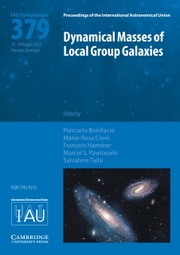No CrossRef data available.
Article contents
A visual guide to planetary microlensing
Published online by Cambridge University Press: 10 November 2011
Abstract
Core share and HTML view are not available for this content. However, as you have access to this content, a full PDF is available via the ‘Save PDF’ action button.
The microlensing technique has found 10 exoplanets to date and promises to discover more in the near future. While planetary transit light curves all show a familiar shape, planetary perturbations to microlensing light curves can manifest a wide variety of morphologies. We present a graphical guide that may be useful when understanding microlensing events showing planetary caustic perturbations.
Information
- Type
- Contributed Papers
- Information
- Copyright
- Copyright © International Astronomical Union 2011
References
Bennett, D. P. 2008, in: Mason, J. (ed.), Exoplanets (Berlin: Springer), p. 47CrossRefGoogle Scholar
Gaudi, B. S. 2010, in: Seager, S. (ed.), Exoplanets (Tucson, AZ: University of Arizona Press)Google Scholar

